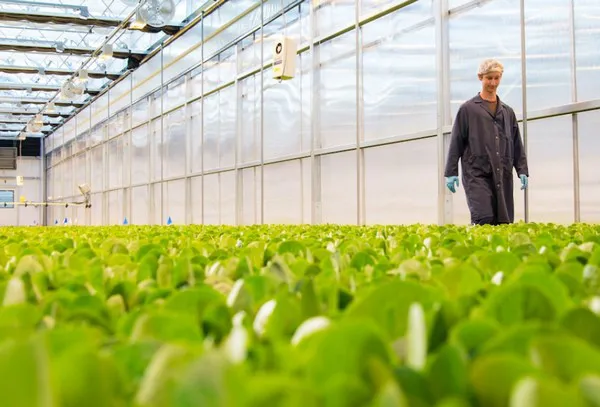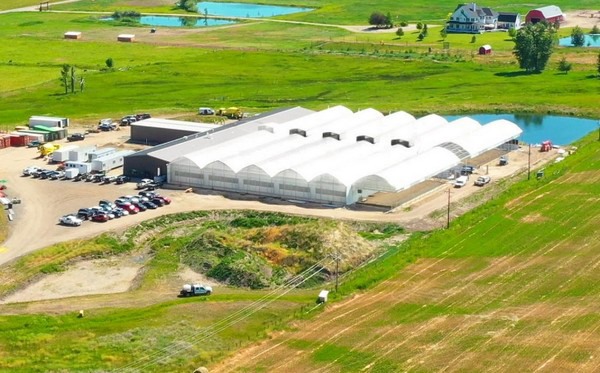Local Bounti is expanding its space in the value-added category and helping forge a new path for the future of indoor farming, known as controlled-environment agriculture (CEA). "We're bringing the customer a healthier, longer-lasting, fresher, and more sustainably-grown product," says Brian Cook, president of Local Bounti Corporation, an indoor agriculture company.
Last week the company exhibited at the International Fresh Produce Association (IFPA) Global Produce & Floral Show for the first time. There it had on display its core items, including its packaged lettuce varieties, and also unveiled its newest items – two value-added salad kits that have recently been launched in the Pacific Northwest.
 Cook says in many ways, CEA is still in its infancy, with greenhouse lettuce not offered in much of the world
Cook says in many ways, CEA is still in its infancy, with greenhouse lettuce not offered in much of the world
"We're excited about what these new salad kits do for the overall value-added space. Consumers want to have a restaurant experience but, with inflation, have had to cut back. Being able to bring restaurant flavors to the category offers an elevated eating experience at home," says Cook, adding ultimately, the goal is to expand the line nationally. "We think it's a refreshing take to what's out there in the marketplace today."
 It's also the result of a goal that the company has to redefine indoor farming. "CEA has grown a lot over the years. In many ways, it's still in its infancy with greenhouse lettuce not offered in much of the world," he says, adding, "other than some higher cost, niche ways of growing produce."
It's also the result of a goal that the company has to redefine indoor farming. "CEA has grown a lot over the years. In many ways, it's still in its infancy with greenhouse lettuce not offered in much of the world," he says, adding, "other than some higher cost, niche ways of growing produce."
Right: Brian Cook
Evolution of CEA
Overall, he notes, the indoor growing space has evolved a great deal. "It started with the NFT (Nutrient Film Technique) and DWC (Deep Water Culture). Indoor growing then moved more into automation in the 1990s, with a mobile gulley system with product grown in channels," Cook says. After that, the focus became increasingly on lighting options, including LED, and the myriad of benefits this new wave of technology offered. "Every year, it has moved faster, and the innovation is happening at a quicker pace. And now we're looking at artificial intelligence (AI) and what the plants can tell us to help ensure we're growing the best."
 The company's first greenhouse in Hamilton, Montana
The company's first greenhouse in Hamilton, Montana
Look no further than Local Bounti's Stack & Flow Technology, which is designed to maximize the indoor growing space and the plants' growing cycle. "We took the best part of two different ways of growing and combined them. Historically, greenhouses had a lot of empty space because it takes plants time to grow in a certain stage of life," says Cook. "We're optimizing space and growing vertically, which is where stack comes in. After that, the plants go to the greenhouse to finish their life cycle, and that is the flow piece. We are combining vertical and typical horizontal growing."
All of this is a delicate cohabitation of investment and profitability for indoor growers. "We want everyone to have that great quality experience so you can't cut corners on what you're doing. If you're trying to do too much or move too fast, you could really lose product quality," says Cook. "You need to make sure you have the ability to grow so that there is always product in stores and you're doing it at a price point that's profitable but also approachable for consumers. You can't give up on product quality."
 For more information:
For more information:
Maggie Swett
Local Bounti
Tel: +1 (646) 277-1271
[email protected]
https://localbounti.com/
